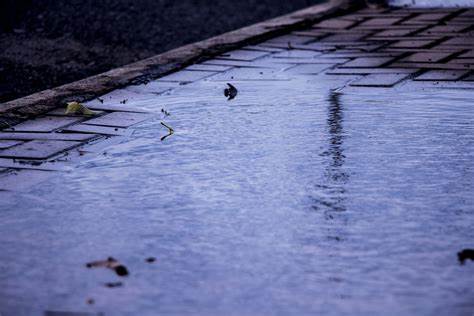The chimney usually serves one primary function in the eyes of a house owner. To vent out smoke from the fireplace in the cold wintery months or all months in the cold enough places. However, a somewhat common problem one may run into when maintaining their home are chimney leaks.
One cannot understate the importance of spotting a chimney leak when slight; they have the ability to become much worse problems down the road. Water is known for causing issues, after all.
It’s Just a Hole
It is possible with older homes and buildings to get a chimney with no cover installed. In which case, the problem should be obvious. Nothing is stopping the water; after all, it’s just a hole.
In these cases, it’s simple enough to get a chimney cover installed. Rather than be a crown for a masonry chimney or a chase cover for a chimney chase. Either way, you should also install a chimney cap.
This is important for more than just leaks. Without these parts to help protect the chimney, it’s not just water that can get it. Animals, Debris, cold air, and more are also being freely allowed access, and should a storm blow in the inside of the house, and it won’t likely be a fan of what all visits it.
The Obvious Secondary
If those elements keep water out, they are not doing their function if water is getting in. It’s possible they broke in some way.
For the chimney cap, most likely, it blew off. It happens when hit with intense enough winds or other things while withstanding storms. Otherwise, it may have been warped, which is possible if it has suffered a chimney fire or enough stress. With water damage, it may have even oxidized. Otherwise, if screens are damaged in some way, it needs replacement.
As for the Crown, in the end, it is only a concrete slab and, as such, is vulnerable to nearly all the dangers of water. It will warp and crack in time, maybe partially eroded or dissolved in the rain, be it clean or more likely if acidic. These imperfections will only worsen, and eventually, holes through the crown will form, allowing water through. Unlike the cap, which needs to nearly always be replaced, crowns can be repaired by filling in the areas of loss material. If preferred, however, they can also be replaced entirely.
If the chimney has a Chase Cover, some materials they come in are prone to quickly oxidize, in most cases a steel that will rust. In this case, replace it with one that is more resistant to the power of water, and make sure to check on its state from time to time.
In all cases, blunt force is also able to cause breaking. Be it a tree falling into the chimney, a nasty hailstorm, or some debris.
The Body
It is always possible the chimney suffers some bodily injury. Especially if a masonry chimney, water damage of the same kind to a chimney crown can happen here. However, the pointing will take the stress, and thus one will only need to pay for repointing. This is a case that requires extreme priority, as it is a sign that a chimney’s structural integrity is at stake and can lead to total collapse in the body if not addressed.
As with the prior section, if the chimney is struck hard enough, its walls may give. If you ever hear a loud bang on the roof, it’s good practice to check for any damage to the home. For chimney chases, there is little risk of bodily energy from any other cause than direct trauma.
The last way that a chimney may be leaking in the body is Flashing, the area where the chimney and the roof intersect. Flashing is often an oxidation-resistant metal sealed with tar or another waterproof sealant. But water knows how to remove its obstacles; such is how caves and rivers are formed. It is possible the water eroded the adhesive away. This sort of leak also deserves priority as it exposes both the chimney and roof to water damage.
Sweat
Chimneys can condensate; it’s rare, unlikely, entirely uncommon, but possible. This is likely due to an oversight or mistake in installing a gas burner in what used to be a wood-burning fireplace, likely the wrong chimney liner being installed.
This can be a priority due to the gas that isn’t adequately ventilated. Still, it is nothing a professional chimney inspection should not notice and address in proper time.

